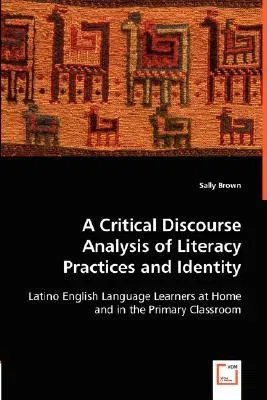Sally Brown
(Author)A Critical Discourse Analysis of Literacy Practices and IdentityPaperback, 7 April 2008

Qty
1
Turbo
Ships in 2 - 3 days
In Stock
Free Delivery
Cash on Delivery
15 Days
Free Returns
Secure Checkout
Print Length
228 pages
Language
English
Publisher
VDM Verlag Dr. Mueller E.K.
Date Published
7 Apr 2008
ISBN-10
3836490595
ISBN-13
9783836490597
Description
Product Details
Author:
Book Format:
Paperback
Country of Origin:
US
Date Published:
7 April 2008
Dimensions:
22.86 x
15.24 x
1.22 cm
ISBN-10:
3836490595
ISBN-13:
9783836490597
Language:
English
Location:
Saarbrucken
Pages:
228
Publisher:
Weight:
308.44 gm

